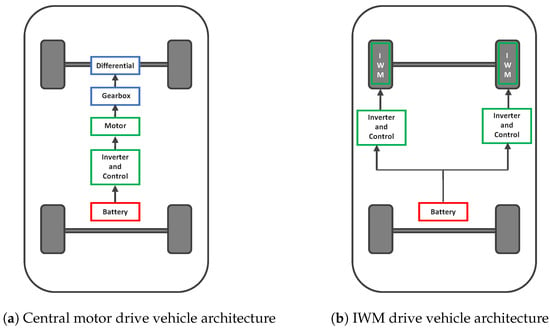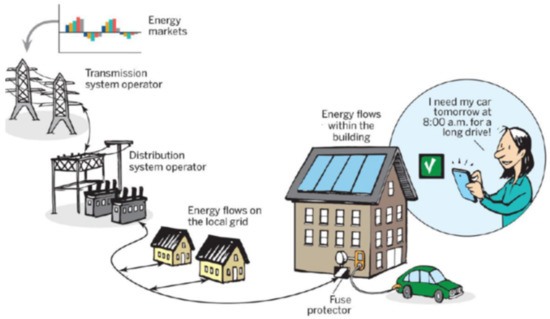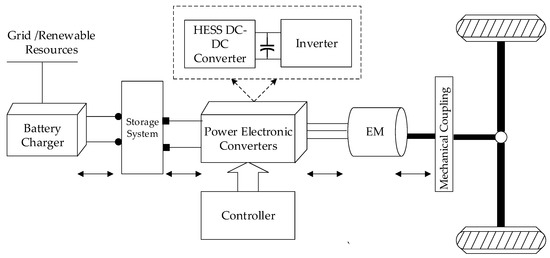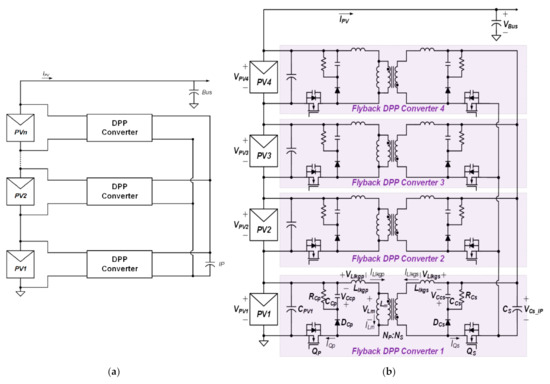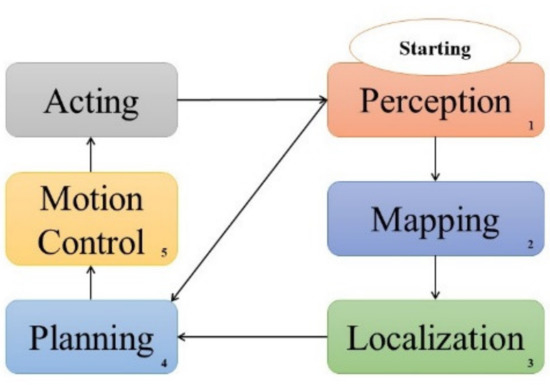"Electric Vehicles" Section: Review Papers
Share This Topical Collection
Editors
 Prof. Dr. Pedro Roncero-Sanchez
Prof. Dr. Pedro Roncero-Sanchez
 Prof. Dr. Pedro Roncero-Sanchez
Prof. Dr. Pedro Roncero-Sanchez
E-Mail
Website
Collection Editor
Electrical and Electronic Engineering and Control Systems, University of Castilla-La Mancha, Ciudad Real, 13071 Ciudad Real, Spain
Interests: control of grid connected converters; power quality; renewable energy systems; energy storage devices; wireless power transfer
Special Issues, Collections and Topics in MDPI journals
 Prof. Dr. João Paulo Carvalho Lustosa da Costa
Prof. Dr. João Paulo Carvalho Lustosa da Costa
 Prof. Dr. João Paulo Carvalho Lustosa da Costa
Prof. Dr. João Paulo Carvalho Lustosa da Costa
E-Mail
Website
Collection Editor
Department of Electric Engineering, Hamm-Lippstadt University of Applied Sciences, Marker Allee 76-78, 59063 Hamm, Germany
Interests: autonomous driving; electric vehicles; wireless communication; electrical engineering; signal processing
 Prof. Dr. Caiping Zhang
Prof. Dr. Caiping Zhang
 Prof. Dr. Caiping Zhang
Prof. Dr. Caiping Zhang
E-Mail
Website
Collection Editor
School of Electrical Engineering, Beijing Jiaotong University, No.3 Shangyuancun, Haidian District, Beijing 100044, China
Interests: battery modeling and states estimation; aging mechanisms and RUL prediction; charging optimizations; battery fault diagnosis and early warning
Special Issues, Collections and Topics in MDPI journals
 Prof. Dr. Kaamran Raahemifar
Prof. Dr. Kaamran Raahemifar
 Prof. Dr. Kaamran Raahemifar
Prof. Dr. Kaamran Raahemifar
E-Mail
Website
Collection Editor
Department of Chemical Engineering, University of Waterloo, 200 University Avenue W, Waterloo, ON N2L 3G1, Canada
Interests: application of optimization in engineering; data analytics and artificial intelligence; reliability and prediction analysis
 Prof. Dr. Roberto Villafafila-Robles
Prof. Dr. Roberto Villafafila-Robles
 Prof. Dr. Roberto Villafafila-Robles
Prof. Dr. Roberto Villafafila-Robles
E-Mail
Website
Collection Editor
CITCEA-UPC, Department of Electrical Engineering (DEE), Universitat Politècnica de Catalunya, Barcelona, Spain
Interests: integration of renewable energy—storage—electric vehicles into power systems; electricity markets; energy and territory
Special Issues, Collections and Topics in MDPI journals
Topical Collection Information
Dear Colleagues,
Electric vehicles (EVs) are impacting the aerial, terrestrial, and marine transportation sectors due to energy conservation, emission reduction, and pollution prevention. However, the transition from fossil fuels to electric propulsion is a complex task, involving many open challenges, such as the design of advanced EV, the production of energy storage systems (ESS), and the development of adequate aviation, land, and naval infrastructure. In order to enable more scholars to quickly understand cutting-edge technologies in the field of EVs, this collection focuses on review papers in the field, including but not limited to:
- Ground EVs;
- Airborne EVs;
- Seaborne EVs;
- Electrically powered spacecraft;
- Autonomous and connected vehicles;
- Battery/ultracapacitor/fuel cell;
- Charging technologies;
- Energy and battery management systems;
- EV market and policy;
- Electric drive systems and component technologies;
- Grid integration of EVs;
- Safety aspects and information security issues of EVs.
Prof. Dr. Pedro Roncero-Sanchez
Prof. Dr. João Paulo Carvalho Lustosa da Costa
Prof. Dr. Caiping Zhang
Prof. Dr. Kaamran Raahemifar
Dr. Roberto Villafafila-Robles
Collection Editors
Manuscript Submission Information
Manuscripts should be submitted online at www.mdpi.com by registering and logging in to this website. Once you are registered, click here to go to the submission form. Manuscripts can be submitted until the deadline. All submissions that pass pre-check are peer-reviewed. Accepted papers will be published continuously in the journal (as soon as accepted) and will be listed together on the collection website. Research articles, review articles as well as short communications are invited. For planned papers, a title and short abstract (about 100 words) can be sent to the Editorial Office for announcement on this website.
Submitted manuscripts should not have been published previously, nor be under consideration for publication elsewhere (except conference proceedings papers). All manuscripts are thoroughly refereed through a single-blind peer-review process. A guide for authors and other relevant information for submission of manuscripts is available on the Instructions for Authors page. Energies is an international peer-reviewed open access semimonthly journal published by MDPI.
Please visit the Instructions for Authors page before submitting a manuscript.
The Article Processing Charge (APC) for publication in this open access journal is 2600 CHF (Swiss Francs).
Submitted papers should be well formatted and use good English. Authors may use MDPI's
English editing service prior to publication or during author revisions.
Keywords
- hybrid and electric vehicles
- energy storage systems
- powertrain technology
- economic and environmental issues
- lifecycle assessment
- power electronic converters
- energy conversion
- energy management
- EV market and policy
Published Papers (11 papers)
Open AccessArticle
Analyzing the Influence of Load Current on the Thermal RC Network Response of Melting-Type Fuses Used in Battery Electric Vehicles
by
Oliver Makan and Kai-Peter Birke
Viewed by 320
Abstract
High-voltage fuses are critical safety components in electric vehicle (EV) battery systems, yet their thermal behavior under charging currents remains insufficiently characterized. This study develops and validates a physics-based thermal resistor-capacitor (RC) network model of a high-voltage melting fuse, accounting for copper elements,
[...] Read more.
High-voltage fuses are critical safety components in electric vehicle (EV) battery systems, yet their thermal behavior under charging currents remains insufficiently characterized. This study develops and validates a physics-based thermal resistor-capacitor (RC) network model of a high-voltage melting fuse, accounting for copper elements, quartz sand filling, and polyester casing. Experimental accelerated life tests and current step load profiles were performed in a climate chamber at 70 °C, with temperature measurements at the fuse terminals. The RC model was constructed using material properties and geometry-derived parameters, including three copper element sections, one quartz sand node, and one case node. A discretized state–space formulation was implemented to simulate the transient thermal behavior. The results reveal distinct dynamic and stationary characteristics, with thermal time constants varying strongly between fuse sections. Comparisons with experimental data demonstrate that the proposed model captures both rise time and steady-state behavior, with deviations attributable to contact resistances and parasitic effects. The findings highlight that charging currents in practical profiles typically remain below 50% of fuse current ratings, leaving optimization potential for higher permissible currents, faster charging, and reduced downtime while maintaining safety. The outcome of this model is highly relevant for lifetime prediction models.
Full article
►▼
Show Figures
Open AccessReview
Solar-Powered Electric Vehicles: Comprehensive Review of Technology Advancements, Challenges, and Future Prospects
by
Oluwapelumi John Oluwalana and Katarzyna Grzesik
Cited by 2 | Viewed by 4749
Abstract
This comprehensive review examines the evolution, current state, and future potential of solar-powered electric vehicles (SEVs) and vehicle-integrated photovoltaics (VIPV). This study analyzed 77 relevant scientific papers published up to March 2025, identifying significant advancements in photovoltaic efficiency, lightweight materials, and integration techniques.
[...] Read more.
This comprehensive review examines the evolution, current state, and future potential of solar-powered electric vehicles (SEVs) and vehicle-integrated photovoltaics (VIPV). This study analyzed 77 relevant scientific papers published up to March 2025, identifying significant advancements in photovoltaic efficiency, lightweight materials, and integration techniques. Although SEVs and VIPV show promising potential for sustainable mobility, challenges remain in areas such as energy yield optimization, climate adaptability, and economic viability. This review highlights research gaps and proposes future directions, emphasizing the need for standardized testing protocols, improved energy management systems, and innovative material solutions to address these challenges. Key findings include the development of SEVs from early prototypes to limited commercial applications, the importance of the design and integration of solar photovoltaic systems, advancements in energy management and optimization, the use of lightweight materials, and the impact of climate and shading factors on performance. The review concludes by outlining directions for future research on the advancement of energy management systems, with particular emphasis on optimizing solar energy input, battery efficiency, and economic viability. Furthermore, it is recommended to investigate materials that achieve an optimal balance between durability, cost-effectiveness, and photovoltaic performance, as well as to develop adaptive solar capture designs tailored to diverse vehicle platforms.
Full article
►▼
Show Figures
Open AccessFeature PaperReview
Li-Ion Batteries for Electric Vehicle Applications: An Overview of Accurate State of Charge/State of Health Estimation Methods
by
Adolfo Dannier, Gianluca Brando, Mattia Ribera and Ivan Spina
Cited by 5 | Viewed by 2532
Abstract
Road transport significantly contributes to greenhouse gas emissions in all places where it is used and therefore also in Europe, prompting the EU to set ambitious objectives for CO
2 reduction. In order to reach these objectives, the automotive industry is transitioning to
[...] Read more.
Road transport significantly contributes to greenhouse gas emissions in all places where it is used and therefore also in Europe, prompting the EU to set ambitious objectives for CO
2 reduction. In order to reach these objectives, the automotive industry is transitioning to electric vehicles, utilizing electric powertrains powered by battery packs. However, the longevity and reliability of these batteries are critical concerns. This review paper focuses on the advanced diagnostic techniques for effective battery State of Charge (SoC) and State of Health (SoH) monitoring. Accurate SoC/SoH estimation is crucial for optimizing battery performance, avoiding premature degradation, and ensuring driver safety. By investigating these areas, this paper aims to contribute to the development of more sustainable and durable electric vehicles, supporting the transition to cleaner transportation systems.
Full article
►▼
Show Figures
Open AccessEditor’s ChoiceArticle
Review on Noise Generation Issues and Noise Mitigation Methods in Electric Vehicle Charging Systems
by
Marcin Jarnut, Jacek Kaniewski and Mariusz Buciakowski
Cited by 2 | Viewed by 1967
Abstract
This paper presents an overview of issues related to noise generation in electric vehicle (EV) charging systems. It discusses the requirements for noise reduction in locations where charging stations are most commonly installed. The primary sources of noise in EV charging stations are
[...] Read more.
This paper presents an overview of issues related to noise generation in electric vehicle (EV) charging systems. It discusses the requirements for noise reduction in locations where charging stations are most commonly installed. The primary sources of noise in EV charging stations are identified, considering their design and configuration. The results of acoustic tests for specific noise sources and entire charging stations are presented, including measurements of sound pressure level (SPL), acoustic imaging, and the generated acoustic spectrum. The paper also describes noise reduction methods and proposes solutions aimed at minimizing the noise generated by charging infrastructure. Additionally, the results of tests illustrating the effectiveness of these methods are presented.
Full article
►▼
Show Figures
Open AccessReview
Mobile Charging Stations: A Comprehensive Review of Converter Topologies and Market Solutions
by
Rafael C. Neto, Camila M. Bandeira, Gustavo M. S. Azevedo, Leonardo R. Limongi, Márcio R. S. de Carvalho, José F. C. Castro, Pedro A. C. Rosas, Augusto C. Venerando, Newmar Spader and Emilio Bueno
Cited by 6 | Viewed by 3863
Abstract
The adoption of electric vehicles (EVs) has shown exponential growth in recent years, with expectations for further development in the years to come. With such significant expansion, efforts and incentives are shifting from EV sales to projects aimed at expanding charging station infrastructure.
[...] Read more.
The adoption of electric vehicles (EVs) has shown exponential growth in recent years, with expectations for further development in the years to come. With such significant expansion, efforts and incentives are shifting from EV sales to projects aimed at expanding charging station infrastructure. In order to sustain this growing trend, a reliable and robust charging infrastructure is needed. However, the entire process of planning, designing, and constructing fixed charging stations (FCSs) is time-consuming and expensive. In this scenario, mobile charging stations (MCSs) offer a complementary solution to ensure the necessary reliability for the improvement of EV owners’ experiences in the electrified transportation sector, as they help reduce range anxiety, peak-hour costs, and waiting times. In this sense, this paper aims to disseminate the state-of-the-art research and studies on MCSs, covering topics such as architectures, standards, converter topologies, and market solutions.
Full article
►▼
Show Figures
Open AccessReview
Electric Vehicle (EV) Review: Bibliometric Analysis of Electric Vehicle Trend, Policy, Lithium-Ion Battery, Battery Management, Charging Infrastructure, Smart Charging, and Electric Vehicle-to-Everything (V2X)
by
Ibham Veza, Mohd Syaifuddin, Muhammad Idris, Safarudin Gazali Herawan, Abdulfatah Abdu Yusuf and Islam Md Rizwanul Fattah
Cited by 27 | Viewed by 6007
Abstract
Electric vehicles (EVs) have seen significant growth due to the increasing awareness about environmental concerns and the negative impacts of internal combustion engine vehicles (ICEVs). The electric vehicle landscape is rapidly evolving, with EV policies, battery, and charging infrastructure and electric vehicle-to-everything (V2X)
[...] Read more.
Electric vehicles (EVs) have seen significant growth due to the increasing awareness about environmental concerns and the negative impacts of internal combustion engine vehicles (ICEVs). The electric vehicle landscape is rapidly evolving, with EV policies, battery, and charging infrastructure and electric vehicle-to-everything (V2X) at its forefront. This review study used a bibliometric analysis of the Scopus database to investigate the development of EV technology. This bibliometric study specifically focuses on analyzing electric vehicle trends, policy implications, lithium-ion batteries, EV battery management systems, charging infrastructure, EV smart charging technologies, and V2X. Through this detailed bibliometric analysis discussion, we aim to provide a better understanding of holistic EV technology and inspire further research in electric vehicles. The analysis covers the period from 1990 to 2022. This bibliometric analysis underscores the interplay of electric vehicle policies, technology, and infrastructure, specifically focusing on developments in battery management and the possibility of V2X technology. In addition, this bibliometric analysis suggests the synchronization of international electric vehicle policy, advancement of battery technology, and promotion of the use of EV smart charging and V2X systems. This bibliometric analysis emphasizes that the expansion of EVs and sustainable mobility relies on a comprehensive strategy that encompasses policy, technology, and infrastructure. This bibliometric analysis recommends fostering collaboration between different sectors to drive innovation and advancements in electric vehicle technology.
Full article
►▼
Show Figures
Open AccessReview
In-Wheel Motor Drive Systems for Electric Vehicles: State of the Art, Challenges, and Future Trends
by
Kritika Deepak, Mohamed Amine Frikha, Yassine Benômar, Mohamed El Baghdadi and Omar Hegazy
Cited by 74 | Viewed by 21900
Abstract
Recently, there has been significant attention given to the electrification of transportation due to concerns about fossil fuel depletion and environmental pollution. Conventional drive systems typically include a clutch, reduction gear, and mechanical differential, which results in power loss, noise, vibration, and additional
[...] Read more.
Recently, there has been significant attention given to the electrification of transportation due to concerns about fossil fuel depletion and environmental pollution. Conventional drive systems typically include a clutch, reduction gear, and mechanical differential, which results in power loss, noise, vibration, and additional maintenance. However, in-wheel motor drive technology eliminates the need for these components, providing benefits such as higher system efficiency, improved wheel control, and increased passenger comfort. This article offers a comprehensive review of the technology and development of in-wheel motor drives. It begins with an overview of in-wheel motor drives in electric vehicles, followed by an exploration of the types of electric motors suitable for in-wheel motor drives. The paper then presents an industrial state of the art of in-wheel motors, comparing them with conventional motor drives, and reviews the implemented power electronics, control system, and cooling systems. Finally, the paper concludes by providing an outlook on the challenges and future trends of in-wheel drive systems.
Full article
►▼
Show Figures
Open AccessArticle
A Review of Tariffs and Services for Smart Charging of Electric Vehicles in Europe
by
Julia Hildermeier, Jaap Burger, Andreas Jahn and Jan Rosenow
Cited by 18 | Viewed by 8639
Abstract
Smart charging of electric vehicles (EVs) is an essential approach to reduce the costs and maximise the benefits of increasing numbers of EVs being connected to the power grid. This article analyses 139 tariffs and services for smart EV charging available in Europe.
[...] Read more.
Smart charging of electric vehicles (EVs) is an essential approach to reduce the costs and maximise the benefits of increasing numbers of EVs being connected to the power grid. This article analyses 139 tariffs and services for smart EV charging available in Europe. It finds that while the market for smart EV charging services is growing, there is a lack of consumer information on the savings and broader environmental benefits it offers, such as integration of renewables. Offers are also unevenly distributed across the continent, resulting in unequal access to smart EV charging. The article outlines six strategies to establish framework conditions in energy markets that would address these gaps and establish smart charging as a standard means of charging, to ensure the beneficial integration of EVs into power grids.
Full article
►▼
Show Figures
Open AccessReview
Different Topologies of Electrical Machines, Storage Systems, and Power Electronic Converters and Their Control for Battery Electric Vehicles—A Technical Review
by
Elango Sangeetha and Vijayapriya Ramachandran
Cited by 14 | Viewed by 6384
Abstract
Electric vehicles (EVs) are emerging as an alternative transportation system owing to a reduction in depleting lubricates usage and greenhouse gas emissions. This paper presents a technical review of each and every sub-system and its feasible control of battery EV (BEV) propulsion units.
[...] Read more.
Electric vehicles (EVs) are emerging as an alternative transportation system owing to a reduction in depleting lubricates usage and greenhouse gas emissions. This paper presents a technical review of each and every sub-system and its feasible control of battery EV (BEV) propulsion units. The study includes the possible combination of electrical machines (EMs), storage system, and power electronic converters and their associated control strategies. The primary unit, i.e., EM, is the heart of the EV, which is used to drive the vehicle at the desired speed as well as to restore the regenerative braking (RB) energy that is generated to enhance the overall system reliability. To electrify the transportation sector, it is necessary to include new options of power electronic converter topologies and their associated control strategies for numerous reasons, which include extracting maximum power from sources in case the EV is powered from renewable energy resources, boosting the energy storage capability for longer electric range, managing power flow from the source to battery or battery to vehicle or vehicle to battery, and regulating the speed of the vehicle and braking control. Based on the survey, the suitable combination of sub-systems and their control for three and four-wheeler EVs are summarized in this paper.
Full article
►▼
Show Figures
Open AccessArticle
Differential Power Processing Converter with an Integrated Transformer and Secondary Switch for Power Generation Optimization of Multiple Photovoltaic Submodules
by
Ji-Hoon Lim, Dong-In Lee, Ye-Ji Hyeon, Jae-Hyuk Choi and Han-Shin Youn
Cited by 1 | Viewed by 2643
Abstract
In recent years, to increase the fuel efficiency of environment-friendly vehicles, a large volume of research is ongoing regarding applying photovoltaic (PV) systems. However, in PV systems, a power imbalance between submodules is common due to shading or pollution, and this degrades the
[...] Read more.
In recent years, to increase the fuel efficiency of environment-friendly vehicles, a large volume of research is ongoing regarding applying photovoltaic (PV) systems. However, in PV systems, a power imbalance between submodules is common due to shading or pollution, and this degrades the power generation efficiency of the system. To solve this problem, various differential power processing (DPP) converters have been developed. In order to adopt the DPP converter to environment-friendly vehicles, the DPP converter must have a small volume, high efficiency, and high price competitiveness. In this regard, we propose a DPP converter with a single multi-winding transformer by integrating multiple transformers and secondary sides of the conventional flyback DPP converter. Since the proposed DPP converter can be applied to battery balancing circuits as well as photovoltaic systems, the proposed circuit is a valuable converter. In the PV system, the maximum output power of each submodule is 60 W, and the total PV system is 240 W by connecting four submodules in series. To verify the validity of the proposed DPP converter, a prototype with 8 V input and 60 W/30 V output specification was built and tested, and the effectiveness of the proposed converter is supported by the experimental results.
Full article
►▼
Show Figures
Open AccessFeature PaperReview
An Investigation into the Energy-Efficient Motion of Autonomous Wheeled Mobile Robots
by
Mohammad Mohammadpour, Lotfi Zeghmi, Sousso Kelouwani, Marc-André Gaudreau, Ali Amamou and Massinissa Graba
Cited by 24 | Viewed by 4313
Abstract
In recent years, the use of electric Autonomous Wheeled Mobile Robots (AWMRs) has dramatically increased in transport of the production chain. Generally, AWMRs must operate for several hours on a single battery charge. Since the energy density of the battery is limited, energy
[...] Read more.
In recent years, the use of electric Autonomous Wheeled Mobile Robots (AWMRs) has dramatically increased in transport of the production chain. Generally, AWMRs must operate for several hours on a single battery charge. Since the energy density of the battery is limited, energy efficiency becomes a key element in improving material transportation performance during the manufacturing process. However, energy consumption is influenced by the navigation stages, because the type of motion necessary for the AWMR to perform during a mission is totally defined by these stages. Therefore, this paper analyzes methods of energy efficiency that have been studied recently for AWMR navigation stages. The selected publications are classified into planning and motion control categories in order to identify research gaps. Unlike other similar studies, this work focuses on these methods with respect to their implications for the energy consumption of AWMRs. In addition, by using an industrial Self-Guided Vehicle (SGV), we illustrate the direct influence of the motion planning stage on global energy consumption by means of several simulations and experiments. The results indicate that the reaction of the SGV in response to unforeseen obstacles can affect the amount of energy consumed. Hence, energy constraints must be considered when developing the motion planning of AWMRs.
Full article
►▼
Show Figures















